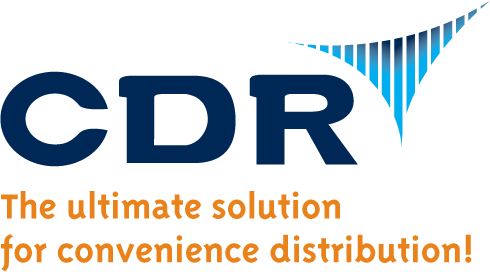Discover essential strategies for minimizing inventory shrinkage in distribution warehouses, including practical tips and how CDR Software can streamline your operations for better efficiency and profitability.
Imagine it’s the end of a long quarter. You’re sitting in the conference room, the air heavy with anticipation as the inventory reports start to roll in. The numbers are not adding up. Again. Warehouse shrinkage has taken its toll, and the discrepancies are glaring. It’s a scenario all too familiar in the distribution industry, where the thin line between profit and loss often hinges on how well you manage your inventory. But what if there was a way to turn the tide?
In this guide, we’re tackling the challenge of warehouse shrinkage head-on. We’ll explore what causes it, how it impacts your business, and most importantly, what you can do about it. Leveraging CDR Software’s expertise in convenience store distribution, we’ll equip you with practical strategies to protect your inventory and enhance your operational efficiency. Whether you’re new to the distribution business or a seasoned pro, this guide is designed to help you cut down on losses and keep your bottom line healthy.
Key Takeaways
- Understanding Shrinkage: Getting a handle on the different aspects of shrinkage is key to tackling it effectively.
- Identifying Causes: Knowing what typically leads to inventory loss helps in crafting focused strategies.
- Implementing Solutions: There’s a variety of strategies, from tech upgrades to process tweaks, to reduce shrinkage.
- Leveraging Expertise: Insights and tools from distribution software leaders, like CDR Software, can significantly improve how you manage inventory.
What Is Inventory Shrinkage?
Inventory shrinkage occurs when there’s a difference between the stock numbers recorded in your system and the actual inventory available. This can happen due to theft, damage, errors in documentation, or even supplier fraud. Essentially, it’s when you have less stock than you thought you did, affecting both your ability to sell and your profit margins.
To put it simply, imagine checking your inventory and expecting to find a certain number of items, only to discover there are fewer than the records suggest. This isn’t just about a few missing items; it’s a sign that something in your operation isn’t working as it should. Whether it’s products disappearing without a trace or numbers that just don’t add up, shrinkage highlights the need for tighter inventory management and control.
Understanding Warehouse Shrinkage
Warehouse shrinkage isn’t just about the occasional missing item; it’s a critical issue that can expose weaknesses in your distribution operation. It involves everything from the physical security of your warehouse to the accuracy of your inventory management systems. Recognizing the different faces of shrinkage—be it theft, damage, or administrative errors—is the first step in fortifying your operations against these losses.
In essence, understanding warehouse shrinkage is about seeing it as a complex challenge that affects every step of your inventory’s journey. It’s not only about safeguarding against external theft but also about minimizing errors and damage that can quietly drain your resources. Addressing shrinkage effectively requires a holistic approach, combining technology, process improvements, and a culture of diligence among your team.

Why Is Inventory Shrinkage Important?
The importance of addressing inventory shrinkage cannot be overstated. Beyond the direct loss of goods, shrinkage affects nearly every aspect of a distribution operation. It can erode profit margins, inflate operational costs, and necessitate price increases to compensate for losses. Moreover, chronic shrinkage issues can damage relationships with suppliers and customers alike, as trust erodes over repeated discrepancies and unfulfilled orders. In the competitive landscape of convenience store distribution, where efficiency and reliability are paramount, letting shrinkage go unchecked is simply not an option.
How to Calculate Inventory Shrinkage in Warehouses
Understanding the extent of inventory shrinkage within a warehouse setting is crucial for maintaining operational efficiency and profitability. Here’s how to calculate your warehouse’s shrinkage rate accurately:
- Conduct a Physical Inventory Count: Begin with a comprehensive count of your actual stock. Accuracy here is vital to ensure you have a clear picture of your inventory.
- Compare with Your Inventory Records: Match the total from your physical count against the inventory levels your records indicate. The variance between these figures represents the volume of your inventory shrinkage.
- Determine the Shrinkage Rate: Use the shrinkage rate formula to quantify your losses as a percentage:
Shrinkage Rate = Recorded Inventory – Physical InventoryRecorded Inventory 100
Regular calculation and analysis of this rate allow warehouse managers to identify trends and assess the impact of measures implemented to reduce shrinkage.
Types and Causes of Warehouse Shrinkage
Warehouse shrinkage can manifest in various forms, each with its unique set of triggers. Understanding both the types and their underlying causes is crucial for developing effective prevention strategies. Here are the primary types of shrinkage encountered in warehouse settings, along with their common causes:
- Theft: Internal theft by employees and external theft by burglars are significant concerns. Enhanced security measures, such as surveillance cameras and restricted access areas, can help mitigate this risk.
- Spoilage: This type primarily affects warehouses storing perishable goods, such as food and beverages. Causes include improper storage conditions and failure to rotate stock based on expiry dates. Implementing strict storage protocols and regular inventory checks can reduce spoilage.
- Vendor Inaccuracy: Mistakes made by suppliers, such as incorrect shipments or mislabeled items, contribute to inventory discrepancies. Regular audits and clear communication with suppliers are key to addressing this issue.
- Administrative Errors: Miscounts, data entry mistakes, and software glitches can all lead to inaccuracies in inventory records. Investing in training for staff and adopting advanced inventory management systems can minimize these errors.
- Damage: Goods can be damaged due to mishandling, improper storage, or accidents within the warehouse. Ensuring proper handling procedures and safe storage conditions are essential preventive measures.
Understanding the different ways shrinkage sneaks into your warehouse and why it happens is just the beginning. Each type of shrinkage not only takes away from your profits but also exposes areas for improvement. By getting ahead of these issues, your warehouse can run smoother, waste less, and keep both your team and your partners happier. Up next, we’ll dive into some hands-on strategies and tools to help you keep your inventory safe and sound.

Impacts of Shrinkage
Shrinkage does more than just reduce the number of items in your warehouse—it hits your business where it hurts the most: your profits. But the ripple effects go further, increasing operational costs and often forcing businesses to hike prices to make up for lost revenue. This can put you at a competitive disadvantage, making it harder to attract and retain customers. Moreover, consistent shrinkage issues can strain relationships with suppliers and partners, leading to a cycle of mistrust and inefficiency. Understanding these impacts is crucial for any warehouse looking to maintain a healthy bottom line and strong business relationships.
Preventing Shrinkage
Combatting shrinkage in a warehouse setting requires a multi-faceted approach, combining technology, process improvements, and employee training. Here are some effective strategies:
- Regular Audits and Inventory Checks: Frequent, surprise audits can help identify discrepancies early, allowing for quicker resolution.
- Enhanced Security Measures: Implementing security cameras, access control systems, and alarm systems can deter theft and unauthorized access. Additionally, utilizing locking totes or secure packaging adds an extra layer of protection, making it difficult for unauthorized access and reducing the temptation for theft. These secure containers also ensure that what leaves the warehouse arrives at its destination without any skimming or tampering, safeguarding the integrity of your shipments.
- Effective Training Programs: Educating your staff on the importance of inventory accuracy and how to prevent errors can reduce administrative mistakes.
- Adopting Robust Inventory Management Software: Solutions like CDR Software offer comprehensive tools for tracking inventory in real-time, reducing the chances of errors and providing valuable insights into inventory trends.
- Optimizing Warehouse Layout: A well-organized warehouse minimizes the risk of damage and loss, making it easier to keep track of inventory.
- Building a Culture of Accountability: Encouraging employees to take responsibility for inventory management can foster a more attentive and diligent workforce.
By implementing these strategies, warehouses can significantly reduce shrinkage, leading to improved profitability and operational efficiency.

How to Prevent Warehouse Theft
Theft is a major contributor to warehouse shrinkage, but it can be mitigated with the right precautions:
- Comprehensive Security Systems: Use CCTV cameras and alarm systems to monitor and protect your warehouse.
- Strict Access Controls: Limit warehouse access to authorized personnel only and track entry and exit times.
- Employee Background Checks: Conduct thorough background checks before hiring new staff to ensure they have a clean record.
- Foster Open Communication: Create an environment where employees feel comfortable reporting suspicious activities without fear of retaliation.
- Utilizing Locking Totes and Secure Packaging: As we’ve mentioned, employing locking totes or secure packaging can add a critical layer of security. These containers are tamper-resistant, making it significantly more challenging for thieves to access the contents and ensuring that what leaves the warehouse arrives at the c-store without any skimming or tampering. This not only deters theft attempts but also preserves the integrity of your shipments from warehouse to customer.
Implementing these measures can create a safer warehouse environment and significantly reduce the risk of theft, ensuring that your inventory remains secure and shrinkage is minimized.
Understanding the Cost of Inventory Shrinkage
Shrinkage can have a profound impact on a business’s financial health. It directly affects cost of goods sold (COGS), eating into profit margins and necessitating adjustments in pricing strategies to compensate. Over time, unchecked shrinkage can lead to significant financial losses, making it essential for warehouses to understand and manage these costs effectively.
Acceptable Warehouse Shrinkage Rates
While no warehouse can completely eliminate shrinkage, understanding industry benchmarks can help in setting realistic goals. Generally, an acceptable shrinkage rate is around 2% of the inventory value, though this can vary by industry. Striving to meet or beat this standard is a good practice for maintaining competitiveness and financial stability.
CDR Software: The All-in-One Tool for Convenience Distributors
At CDR Software, we offer a comprehensive, all-in-one solution tailored for the unique challenges of convenience store distributors. Our platform is built to streamline your entire operation, from inventory management to security, all while providing powerful features specifically designed to minimize shrinkage and protect your bottom line.
Key Features and Benefits:
- Real-Time Inventory Tracking: Stay on top of your inventory with live updates, reducing the chances for discrepancies and enabling quick responses to potential issues.
- Automated Audits and Reporting: Simplify your audit processes with automated tools that provide accurate, up-to-date reports, making it easier to spot and address shrinkage.
- Employee Training Resources: Enhance your team’s skills with built-in training resources focused on inventory management best practices which include shrinkage prevention techniques.
- Supplier Management Tools: Maintain clear, accurate records of all supplier transactions, helping you quickly identify and resolve any vendor-related inaccuracies.
CDR Software stands as your partner in not just combating shrinkage but in achieving operational excellence across your distribution network. Our solution is crafted to provide convenience distributors with the technology and insights needed to run a smoother, more efficient, and profitable operation.
Conclusion
Navigating the complexities of warehouse shrinkage requires vigilance, strategy, and the right tools at your disposal. As we’ve explored in this guide, understanding the nuances of shrinkage, from its causes to its impacts, is crucial for any distribution operation aiming to safeguard its inventory and enhance its bottom line. Implementing the strategies discussed, from regular audits to adopting comprehensive inventory management software, can significantly mitigate the risks and effects of shrinkage.
CDR Software stands ready to empower your distribution business with an all-in-one solution that not only addresses shrinkage but also streamlines your entire operation. With features designed for real-time inventory tracking, automated audits, and enhanced security measures, our platform is your ally in the fight against shrinkage.
Don’t let shrinkage erode your profits and operational efficiency. Take action today by exploring how CDR Software can transform your approach to inventory management. Together, we can achieve a more secure, efficient, and profitable operation. Contact us to learn more.
FAQs
How often should I conduct inventory audits to effectively manage shrinkage?
Regular audits are key. Conducting surprise audits quarterly, in addition to your annual inventory count, can help identify and address discrepancies promptly.
Can technology completely eliminate shrinkage?
While technology can significantly reduce shrinkage by improving accuracy and security, it’s challenging to eliminate it entirely. A combination of technology, processes, and training is most effective.
What’s the first step I should take if I notice an increase in shrinkage?
Start by conducting a thorough audit to identify the source of the discrepancies. Review your security footage, check your inventory management processes, and assess employee training for potential gaps.
How does CDR Software help in reducing shrinkage due to supplier inaccuracies?
CDR Software offers robust supplier management tools that track transactions and shipments, allowing you to quickly spot and rectify any inaccuracies or discrepancies from suppliers.
Is there an industry standard for an acceptable rate of shrinkage?
Yes, though it varies by industry. For many warehouses, a shrinkage rate of around 2% of the inventory value is considered acceptable, but the goal should always be to reduce this as much as possible.

